|
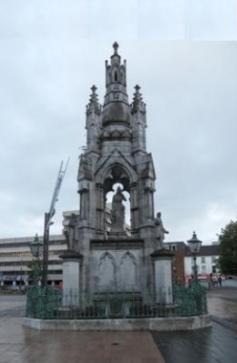
5. The National Monument
Grand Parade,
Cork City, Co Cork
Erected in
1906 to commemorate the rebellions of 1798, 1803, 1848 & 1867
|
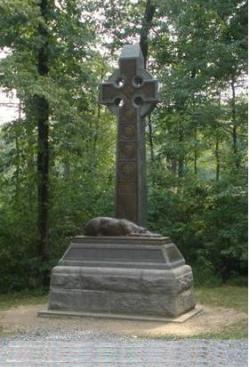
6. Irish Brigade Monument
Gettysburg
Battlefield
Gettysburg, PA
Click on image to view inscription
|
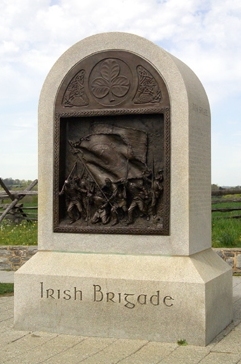
7. Irish Brigade Memorial
at Antietam
National Battlefield in Maryland honors the Irish volunteers of the
63rd, 69th and 88th New York Voluntary Infantry.
|
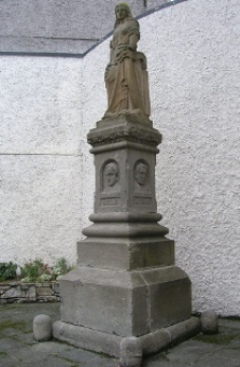
Erected in 1907 in Tipperary Town
to commemorate the
executions
of the Manchester
martyrs
Allen,
Larkin and O'Brien
|
|
|
|

9.
Catalpa Wild Geese Memorial
Rockingham, West
Australia
Commemorates the escape of the six
Fenians from Fremantle Jail:
Robert Cranston, Thomas Darragh,
Michael Harrington, Thomas Hassett, Martin Hogan, and James Wilson |
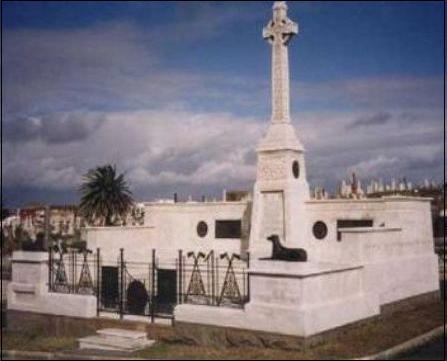
10.
The 1798 Rising Monument in Waverly Cemetery,
Bronte, Sydney,
New South Wales,
Australia
The monument is placed over the grave of
Michael Dwyer (1772–1825) who was a
Society of the United Irishmen leader in the 1798 Rising.
He later fought a
guerilla campaign against the British Army
in the Wicklow
Mountains from 1798-1803. |
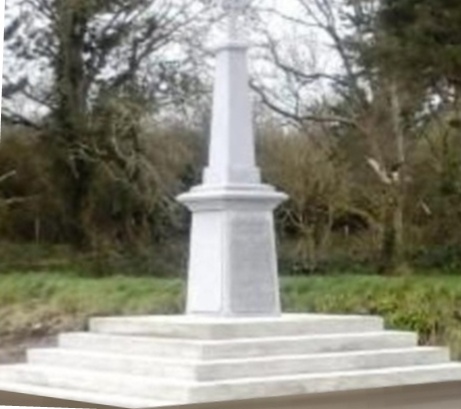
11.
Ballykissane Monument,
Killorglin, Co. Kerry
Commemorates the deaths of
Con Keating, Donal Sheahan and Charlie
Monaghan at Ballykissane pier on 21 April
1916 as they attempted to assist the
importation of arms on board the Aud for the
1916 Rising.
Click on image to view inscription
Photo
provided by Tim Horan
|
|
|
|
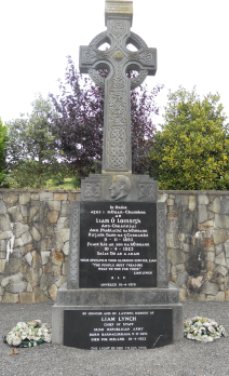
12.
General Liam Lynch Memorial
at
Gleann na gCeabhar Co. Cork.
Lynch commanded the Cork No. 2 Brigade
and the 1st Southern Division of the IRA,
during the War of Independence and Chief of
Staff of the IRA during the Civil War and
was killed by Free State forces on
April 10,
1923.
Click on
image to view inscription
|
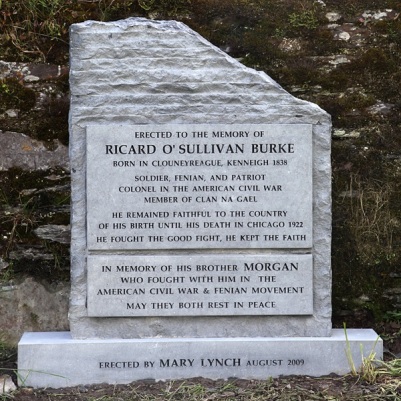
13.
Ricard O'Sullivan Burke
Monument
at
Kinneigh in
Co. Cork.
Erected by
Mary Lynch in August 2009
Click on the image to view inscription |

14. The Pikeman Statue
located in Wexford Town. Co. Wexford
It commemorates Wexford's failed rebellion of 1798 and the declaration
of Ireland's first Republic.
The Statue was sculpted in bronze by Oliver Sheppard.
It's unveiling in 1905 was attended by 30,000. |
|
|
|
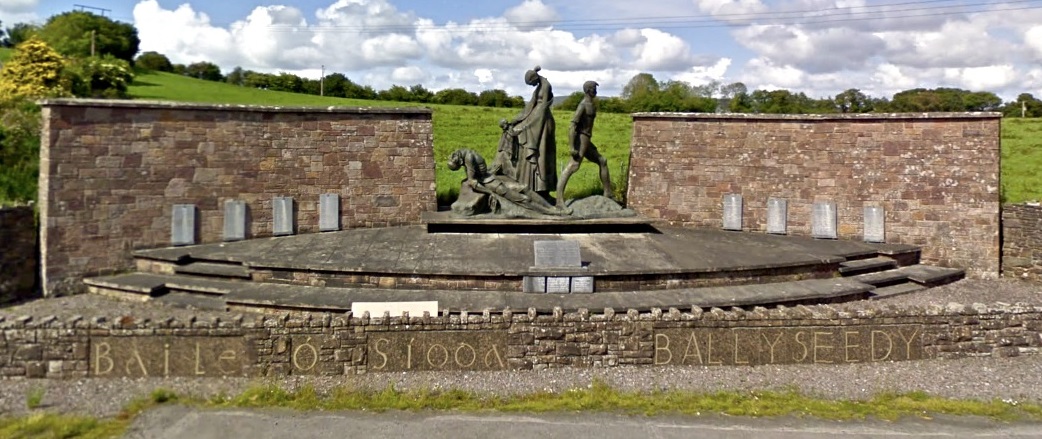

15. Ballyseedy Mouument, Ballyseedy, Co. Kerry, Ireland
At midnight on March 6th 1923,
nine prisoners were brought to Ballyseedy Wood near Ballyseedy cross by
soldiers of the Free State army. They were Pat Buckley, John Daly, Pat
Hartnett, Michael O'Connell, John O'Connor, George O'Shea, Tim Tuomey,
James Walsh and Steven Fuller. When they got there, they were tied
around a log and a land mine was detonated. Most of them survived
the initial blast however, the soldiers used machine guns and grenades
to finish them off. All of them died except Steven Fuller who was
blown away by the force of the blast. He landed in the
nearby river Lee from where he crawled for about 500 yards to Currans
House. They took him in and hid him in a dugout at the back of their
farm for some weeks. He was the only one who survived the massacre
|
| |
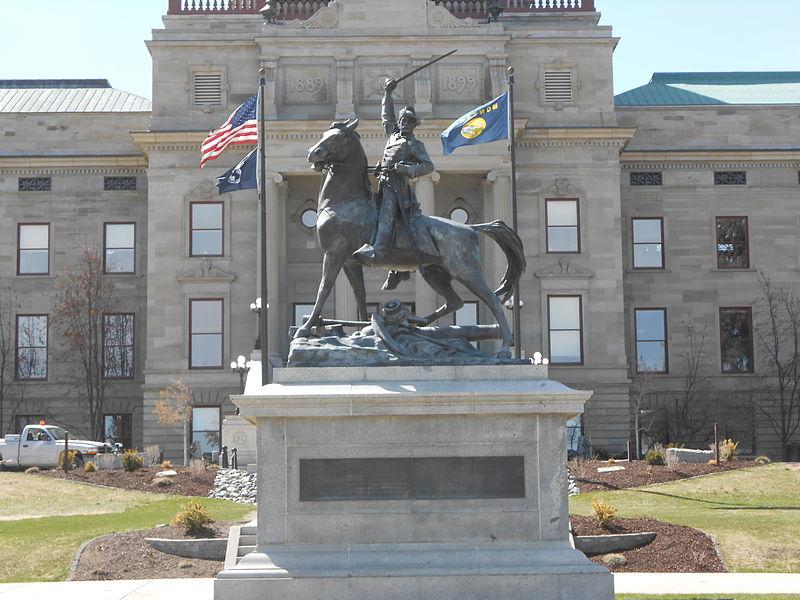
16.
Thomas Francis Meagher Statue
Meagher, on horseback with
sword raised located on the front lawn of the
Capitol grounds in Helena,
Montana. The statue was erected in 1905 |
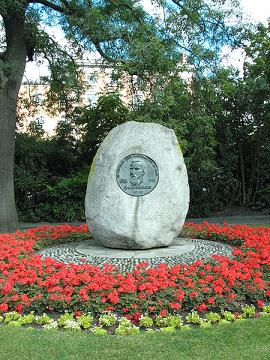
17.
Jeremiah O'Donovan Rossa Monument
St. Stephen's Green, Dublin Ireland |
| |

18. Commodore John Barry
Memorial
United
States Naval Academy, Annapolis, MD
Click on the image to view inscription
|
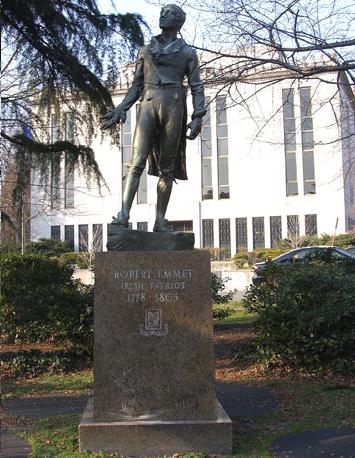
19. Robert Emmet Statue
The statue is
located in the small Emmet Park, near Massachusetts Avenue and 24th
Street, in Sheridan Circle. Washington DC. |

20.
Teeling Monument,
Carricknagat, Co Sligo
The Teeling
monument outside the town commemorates the capture of a British gun
emplacement by
Bartholomew Teeling, when the combined Irish-French forces were under
pressure at the Battle of Carricknagat.
|
| |
|
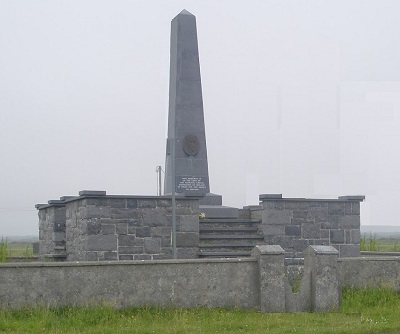
21.
Roger Casement Monument
at Banna
Strand, Co. Kerry
At a spot on Banna Strand adjacent to here Roger
Casement, Robert Monteith and a third man, came ashore from a German
submarine on Good Friday morning 21st. April 1916 in furthering the
cause of Irish freedom’ |
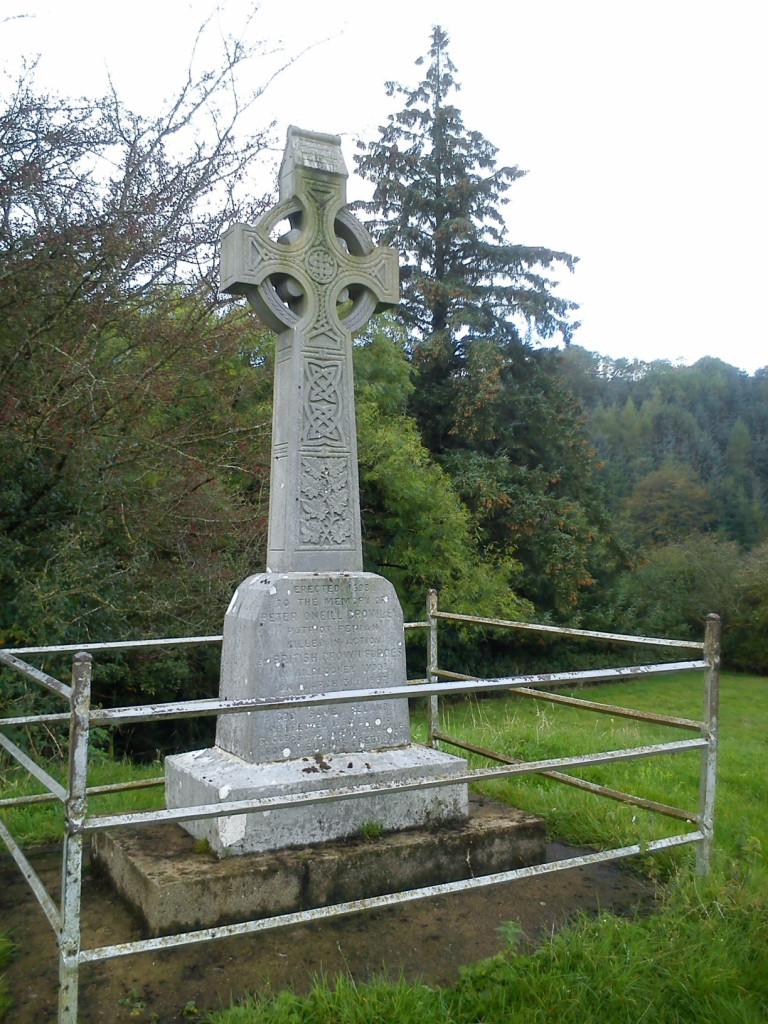
22.
Peter O’Neill Crowley Monument,
Knockanevin, Co. Cork
click on image to
view inscription
Click here for more photos & information
|
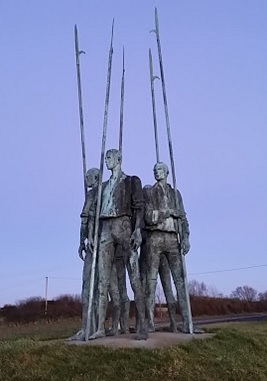
23.
Pikemen Statue, Wexford
The bronze pikemen monument is located on the N25
Wexford to New Ross road. It memorializes the Battle of Three Rocks
fought there during the 1798 Rising.
"There
is nothing surer than that Irishmen of every denomination must stand
or fall together."
William Orr
Photo by:
LC. |
| |

24. Easter Rising Monument
Located on the grounds of
the
Gaelic-American Club in Fairfield CT
to commemorate the 100th year of the Easter Rising and the
ultimate sacrifice made by seven brave
heroes and their comrades in arms who gave their lives so Ireland could gain
its independence from England.
Click on the image to view inscription |
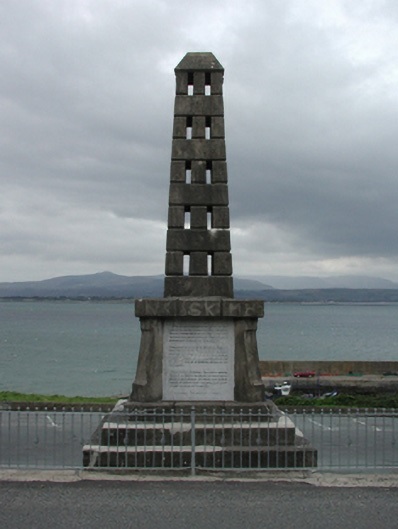
25- Erin's Hope Monument
Located in the Ring Gaeltacht of Co Waterford to commemorate
the voyage of the Erin’s Hope, whose mission was to bring
men, guns and ammunition toIreland in 1867 by way of
helping the Fenian Brotherhood during the Rising of 1867. |
|
|
|
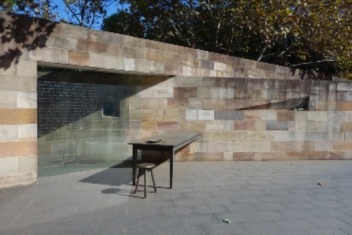
26, Irish Famine
Memorial
Located in Hyde Park Barracks, Sydney, Australia to
commemorate the victims of the Orphan Emigration
Scheme commenced in October of 1848 and ended in August
1850 due to opposition from the Australian colonists
after 4,175 young girls had been sent from Irish
workhouses to Australia. Many of the Irish workhouses
participated in the scheme. |
|
| |
|
|
|

The Soloheadbeg ambush on January 21, 1919, is tagged as the start
of the Irish War of Independence On that day eight Irish Volunteers
Seán Treacy, Dan Breen, Seán Hogan, Séamus Robinson, Tadhg Crowe,
Mick McCormack, Paddy O’Dwyer, Michael Ryan and Seán O’Meara lay in
wait near Soloheadbeg quarry for a cart driven by two council
workers who were bringing a consignment of 160lbs of gelignite and
30 electric detonators to the quarry. On their arrival at the
quarry entrance, shots were fired and the two constables Patrick
McDonnell and James O’Connell were killed. The workmen were
unharmed. South Tipperary was proclaimed a special military area the
following day. The gelignite was buried at Goldengarden and used to
attack a number of RIC barracks including the Cappawhite RIC
barracks on June 4, 1920 |
|
|
|
Kindred Spirit Monument
Midleton’s Bailick Park, Midleton, Co. Cork
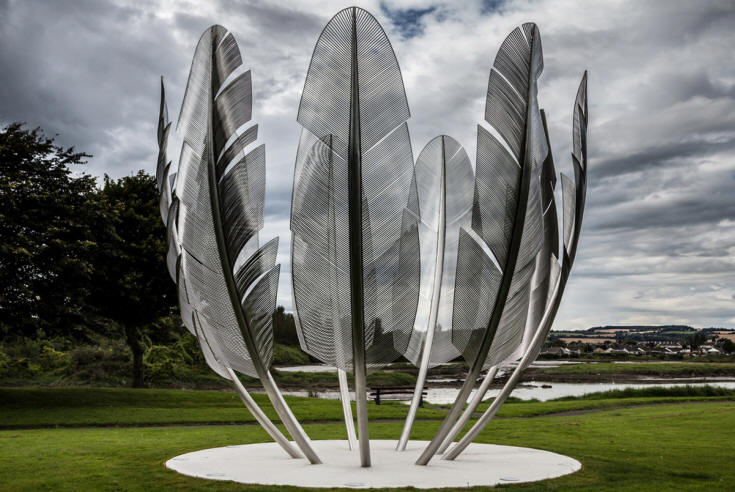
The year 1847 was
the
worst year of the Great Hunger in Ireland, when close to one
million people starved to death. Humanitarian aid came from
around the world. One of the sources of such aid were the Choctaw
Native Americans who raised $170 equivalent to $5,000 today to
purchase food for the starving Irish. What was remarkable about
that humanitarian act was that sixteen earlier, the Choctaw
people were forced to leave their ancestral lands by then U.S.
President Andrew Jackson and trudge five hundred miles on the
“Trail of Tears", in terrible winter conditions to Oklahoma.
The Irish people
still remember what the oppressed Choctaw indigenous people did for
their ancestors in their time of great need. The above
monument stands in tribute to their empathy and generosity.
Named “Kindred Spirits,” the magnificent memorial features nine
giant stainless-steel feathers, shaped into an empty bowl.
---------------------------------------------------------------------------------
The Trail of Tears
refers to the US government enforced relocation of the Cherokee
Native Americans from their native lands in Georgia to
Tahlequah, Oklahoma. This march was a devastating and deadly one
for the Cherokee Nation — over 4,000 deaths occurred during the
march and afterwards in Oklahoma. Roughly 20% of the Cherokee
Nation died, either during the march or shortly afterwards, due
to diseases like dysentery.
To the Cherokee
Nation, this event is called the Nunna daul Isunyi, or
the Trail Where We Cried. The journey was exceptionally
difficult, spanning over 1,000 miles (about 1,600 km). At least
2,000 people died during the march, so cause for weeping is not
hard to understand.
|
|
Back to index page |
|